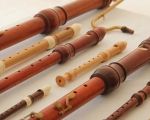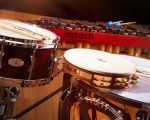Finding the Best Acoustic Guitars for Fingerstyle Playing
As a passionate guitarist, I know how important it is to find the right instrument that suits your playing style. Fingerstyle playing requires precision, subtlety, and a particular set of characteristics in an acoustic guitar. Over the years, I’ve tried many guitars, and today I’m excited to share my journey with you. Let’s dive into what makes an acoustic guitar great for fingerstyle playing and explore some of the top picks I believe will help you elevate your performance.
Why Fingerstyle Playing Needs a Special Kind of Guitar
Fingerstyle guitar is all about using the fingers (rather than a pick) to pluck the strings, creating a more nuanced, intricate sound. The right guitar can make all the difference in how your fingerstyle pieces sound. Fingerstyle playing demands a guitar that responds well to light touches and offers clear tonal separation between the bass and treble strings. The body shape, wood type, and string tension all play crucial roles in how responsive and expressive your guitar can be.
After years of playing fingerstyle, I’ve realized that the most suitable guitars for this technique are often those that have a well-balanced sound and a comfortable neck. Let’s explore some of the top acoustic guitars that stand out in this regard.
The Best Acoustic Guitars for Fingerstyle Playing
1. Martin 000-15M
The Martin 000-15M is a solid, reliable choice for fingerstyle players. Its smaller 000 body size makes it incredibly comfortable to play, while its all-mahogany construction provides a warm, smooth tone that shines through during fingerpicking. Whether you’re playing delicate melodies or full-chord progressions, this guitar’s tonal clarity and smooth response make it an ideal match for fingerstyle techniques. The rich midrange and subtle overtones create an organic sound that brings out the beauty of your playing.
2. Taylor 314ce
Next up is the Taylor 314ce, a guitar that offers excellent playability and an expansive sound. The Grand Auditorium body shape is ideal for fingerstyle, giving you a balanced sound that projects well without overpowering the finer details of your playing. The solid Sitka spruce top and tropical mahogany back and sides combine for a bright yet warm tone, perfect for the nuanced fingerstyle playing. The ES2 pickup system also makes it easy to plug in if you ever want to amplify your sound during live performances.
3. Guild M-120
If you’re looking for something with a bit more vintage charm, the Guild M-120 could be the one. This all-mahogany guitar is designed for fingerstyle playing, offering a warm, dark tone with great resonance. Its smaller body size ensures it’s comfortable for extended playing sessions, and the smooth neck makes it easy to execute complex fingerpicking patterns. This model is perfect for those who want a more intimate sound with plenty of sustain and depth.
4. Yamaha LL16 ARE
The Yamaha LL16 ARE is another great option for fingerstyle guitarists, especially those on a budget. Featuring a solid Engelmann spruce top with the ARE (Acoustic Resonance Enhancement) treatment, this guitar produces a rich, mature tone right out of the box. The deep, resonant bass and clear, bright treble make it perfect for intricate fingerstyle playing. Additionally, its durable construction ensures it will last for many years, making it a great long-term investment for any fingerstyle player.
5. Larrivée Parlor P-03
If you’re seeking a more compact and portable option, the Larrivée Parlor P-03 is an excellent choice. This parlor-sized guitar delivers surprisingly big sound, with great clarity and balance. Its solid mahogany body offers a mellow, warm tone, perfect for fingerpicking. The smaller size also makes it easier to handle, which is especially useful if you’re just starting with fingerstyle techniques. It’s an ideal choice for both beginners and seasoned players who want a lightweight, responsive guitar that doesn’t compromise on sound quality.
Choosing the Right Acoustic Guitar for Fingerstyle Playing
Choosing the best guitar for your fingerstyle playing depends on your unique preferences, but there are a few key factors to consider. Let’s go over the top features to look for when selecting your ideal guitar:
Body Size
The body size plays a significant role in the guitar’s overall tone. Larger bodies, like dreadnoughts, offer a fuller, more resonant sound, but they can be less comfortable for intricate fingerpicking. Smaller bodies, like parlor or concert-sized guitars, tend to offer greater clarity and focus, making them great for fingerstyle playing. However, keep in mind that every player’s comfort level is different, so be sure to try different sizes before deciding on one.
Tonewoods
The wood used for the top, back, and sides of your guitar influences its tone. Spruce tops are commonly used for fingerstyle guitars due to their bright, clear sound, while mahogany tops provide a warmer, more rounded tone. Other woods like cedar or rosewood also have their own unique tonal qualities, so choose a wood that complements your playing style and the sound you’re aiming for.
Neck Comfort
For fingerstyle playing, a comfortable neck is essential for smooth finger movement. Look for guitars with slim neck profiles that make it easy to form intricate chords and execute complex fingerpicking patterns. Neck material also affects playability, so consider a guitar with a neck that feels comfortable and responsive in your hands.
Price Range
While high-end guitars offer premium tone and craftsmanship, there are plenty of affordable options that still deliver great sound and playability for fingerstyle playing. Be sure to consider your budget, and don’t forget that a great guitar can come in many price ranges. Don’t hesitate to try a few different models to find the one that suits both your playing style and your budget.
Tips for Getting the Most Out of Your Fingerstyle Playing
Once you’ve found the right guitar, there are a few things you can do to enhance your fingerstyle technique:
1. Practice Regularly
Like any musical skill, fingerstyle playing requires consistent practice. Focus on developing your finger independence and control to create more dynamic and expressive performances. Even just 20-30 minutes a day can lead to noticeable improvements over time.
2. Experiment with Different Fingerpicking Patterns
Fingerstyle guitar offers endless possibilities, so don’t be afraid to experiment with different fingerpicking patterns. Start with the basics, then try more complex patterns as you become more comfortable. This will help you discover new ways to express yourself musically and add depth to your playing.
3. Focus on Tone Quality
In fingerstyle playing, the tone you create is just as important as the notes you play. Experiment with different hand positions and finger angles to produce the clearest, most balanced sound possible. Pay attention to how you pluck each string to ensure a clean, full tone that resonates through the body of the guitar.
Conclusion
Fingerstyle guitar is a beautiful and intricate style of playing that allows you to bring out the full potential of your acoustic guitar. Whether you’re a beginner or a seasoned player, choosing the right guitar for your playing style is crucial. The guitars mentioned above are some of the best options available, each offering its unique advantages for fingerstyle musicians. Take the time to find the one that feels right for you, and you’ll be well on your way to mastering fingerstyle guitar!








